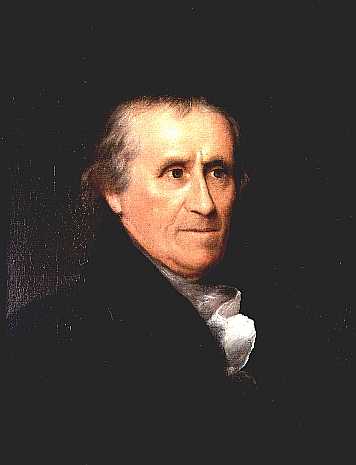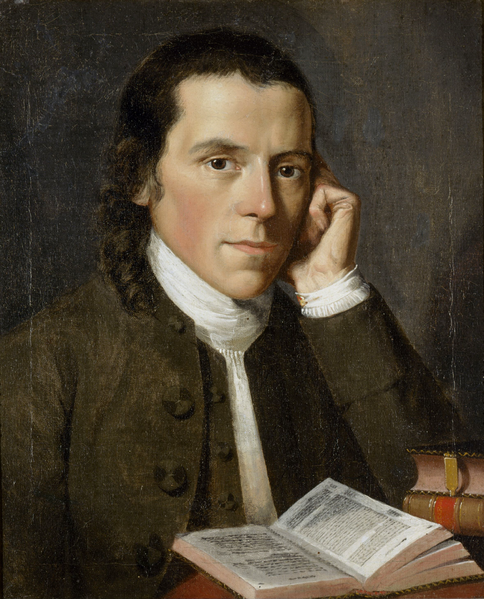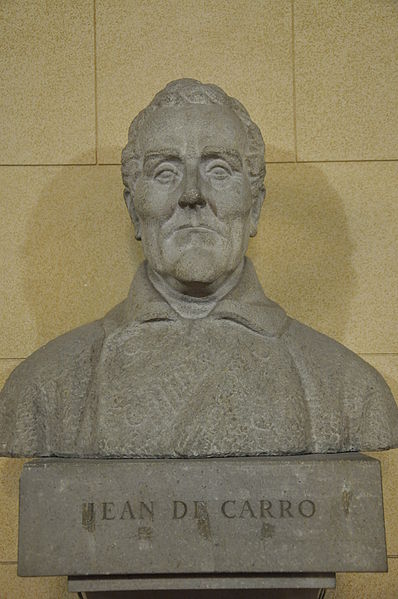<Back to Index>
- Physician Benjamin Waterhouse, 1754
- Physician Jean de Carro, 1770
PAGE SPONSOR


Benjamin Waterhouse (March 4, 1754, Newport, Rhode Island - October 2, 1846, Cambridge, Massachusetts) was a physician and professor at Harvard Medical School. He is most well known for being the first doctor to test the smallpox vaccine in the United States, which he carried out on his own family.
Waterhouse was born into a Quaker family, although he never adopted the religion as his own. His parents were Timothy Waterhouse, a chair maker who also served on the Governor's Council, and Hannah Waterhouse. His medical career began at age 16, when he apprenticed for a doctor in his hometown. At age 21, he left the United States to study medicine in Europe at several notable institutions, such as with Dr. John Fothergill in London, England. He was also educated in Edinburgh and Leyden, where he received his medical degree. While living in Holland, he roomed with future U.S. president John Adams.
After returning to the United States in 1782, Waterhouse joined the faculty of the new medical school at Harvard as one of three professors, including John Warren and Aaron Dexter, in the area of Theory and Practice of Physic. He was also elected that same year as a Fellow at Rhode Island College (now "Brown University"). In 1814, Waterhouse resigned his Harvard professorship after opposing a plan to establish the Medical School in Boston and attempting to found a rival medical school. He was a strong supporter of Samuel Thomson's medical system throughout the 1820s.
Waterhouse first wrote to then President John Adams, his former roommate, hoping to spread the word about cowpox vaccinations preventing smallpox. When he found President Adams unresponsive, he wrote a letter to Vice President Thomas Jefferson entitled "A prospect of exterminating the smallpox."
Jefferson replied with a letter dated Christmas Day, 1800, and soon offered his support. Once Jefferson became President the following year, Waterhouse introduced Edward Jenner's method of cowpox vaccination in the United States. He attempted to maintain a monopoly over the cowpox vaccine, for both financial reasons and to protect the vaccine from incompetent or fraudulent physicians. Waterhouse made the first vaccinations in the United States on four of his children. He commissioned a controlled experiment at the Boston Board of Health in which 19 vaccinated and 2 unvaccinated boys were exposed to the smallpox virus. The vaccinated boys demonstrated immunity and the 2 unvaccinated boys succumbed to the disease.
In
1788, he married Elizabeth Oliver, with whom he had six children. She
died in childbirth in 1815. In 1819, he married Louisa Lee; no children resulted from this marriage.
He died in his home in Cambridge in 1846, and was survived by his wife Louisa. He is interred at Mount Auburn Cemetery, where Louisa erected a small monument in his honor. He is the subject of a biography entitled Dr. Benjamin Waterhouse: A Life in Medicine and Public Service (1754 - 1846) by Philip Cash. His portrait hangs at the Harvard Medical School and his house on Waterhouse Street near Cambridge Common bears a plaque commemorating his introduction of the smallpox vaccine in the United States.
Waterhouse's work with the smallpox vaccine was dramatized in a 1964 episode of the historical anthology series The Great Adventure. He was portrayed by Robert Cummings.

Jean de Carro (born in Geneva, August 8, 1770; died at Carlsbad, March 12, 1857) was a Swiss born physician who worked from Austria to promote vaccination against smallpox.
Taking up his abode in Vienna in 1795, he became celebrated by his efforts in spreading Edward Jenner's system of vaccination as a protection against smallpox in Germany, Hungary, Poland, and Russia. In 1800 he sent a quantity of virus to Lord Elgin at Constantinople, together with a work of his own, translated into Turkish, on vaccination.
The attempts of the English to introduce vaccination into India having been unsuccessful, because the virus had deteriorated on the way, Carro procured vaccine matter from cows of Lombardy, and sent it to Dr. Harford at Baghdad. This retained all its strength, and was the means of introducing kinepox inoculation into India. The Hindus considered it to be derived from a sacred cow.